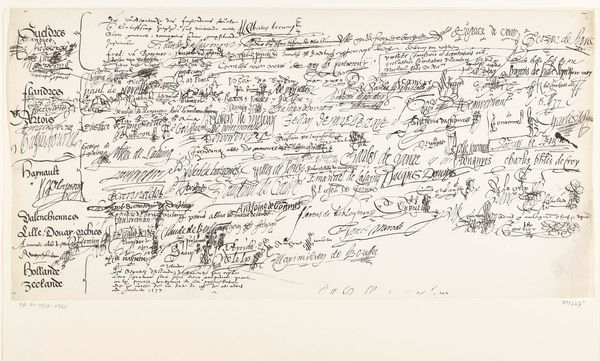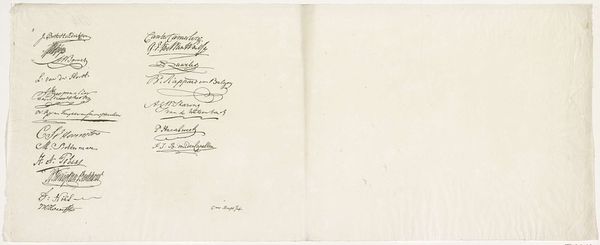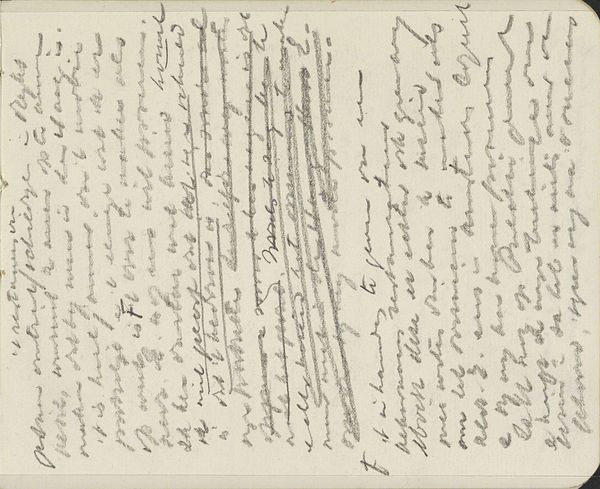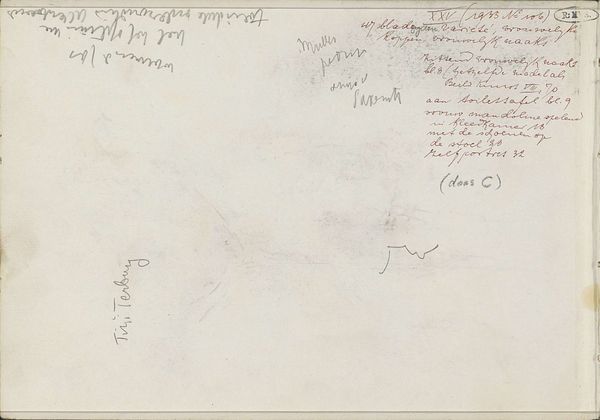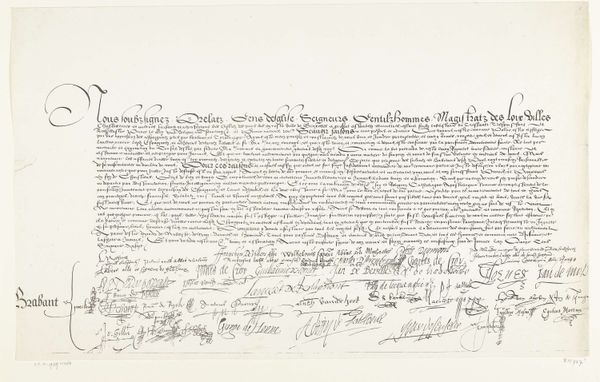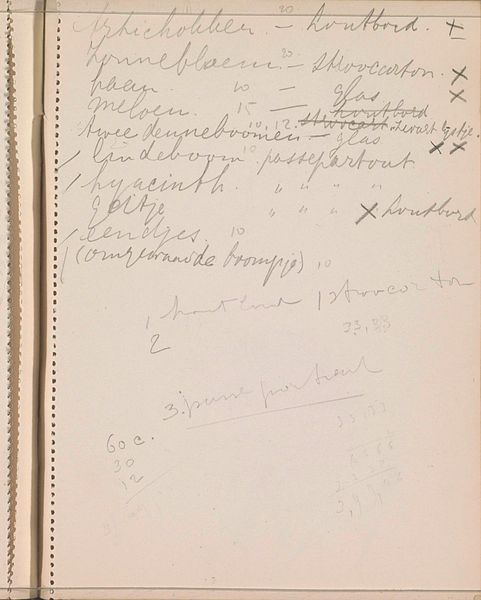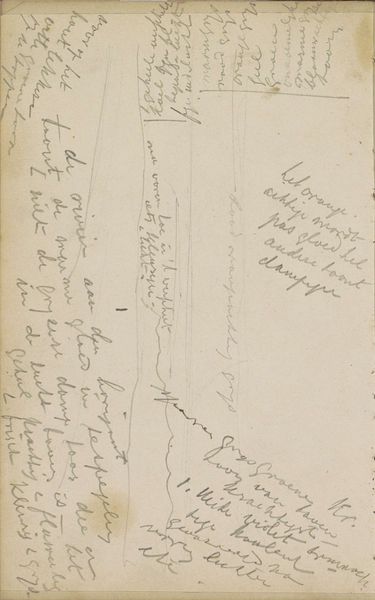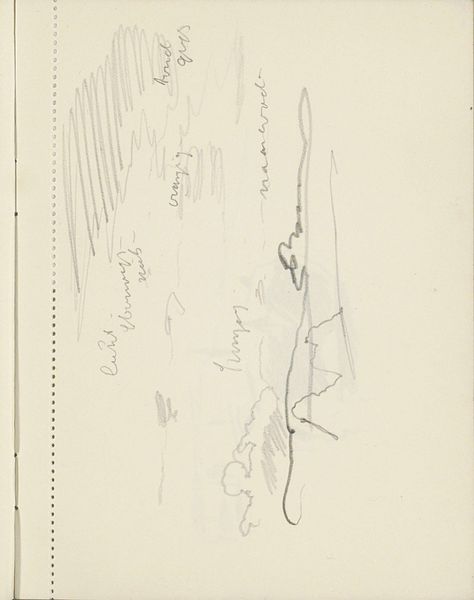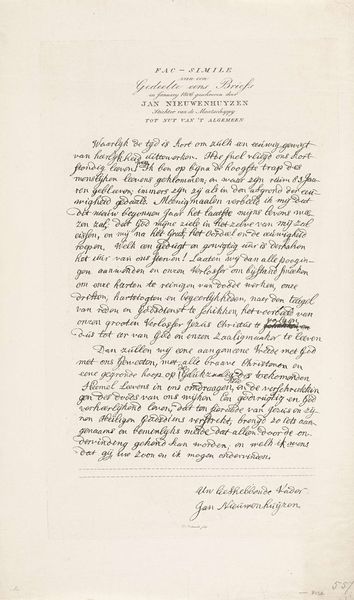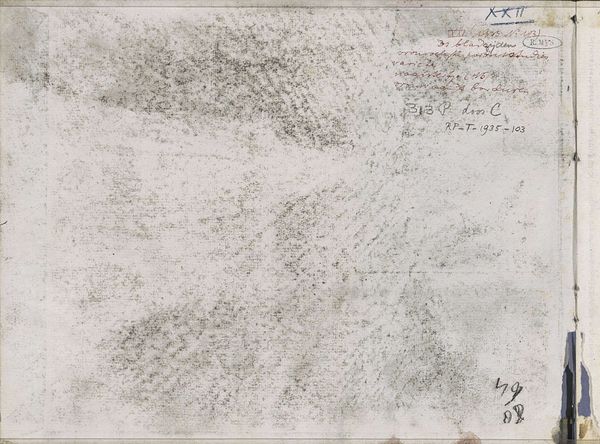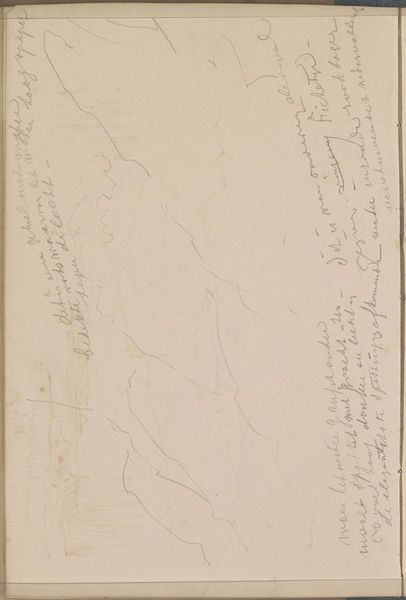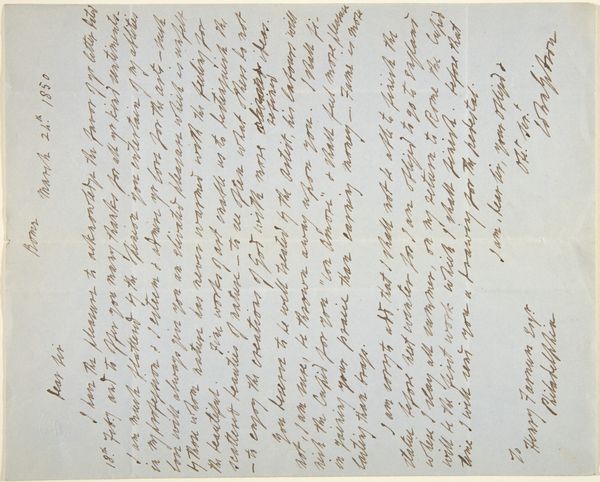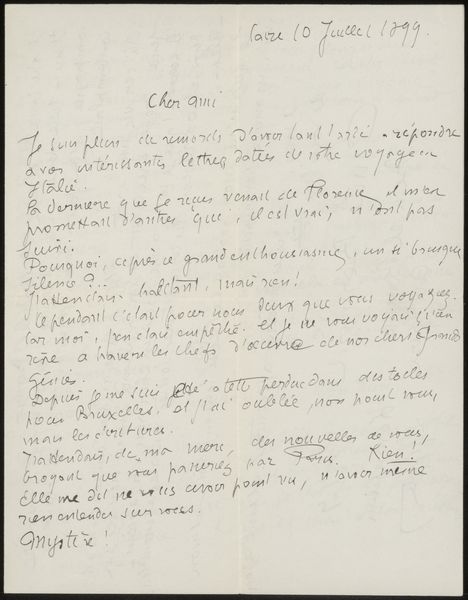
Vierde blad van de facsimile van het geschrift van de Unie van Brussel met handtekeningen, 1577 1827
0:00
0:00
drawing, graphic-art, print, paper, typography, ink
#
portrait
#
drawing
#
graphic-art
# print
#
paper
#
ink line art
#
typography
#
ink
Dimensions: height 375 mm, width 600 mm
Copyright: Rijks Museum: Open Domain
Editor: This is "Vierde blad van de facsimile van het geschrift van de Unie van Brussel met handtekeningen, 1577" a drawing from 1827, attributed to Daniël Abrahams, rendered in ink. It looks like a document filled with signatures and town names. I find the variety of handwriting styles fascinating. How do you interpret this work, especially considering it's a later copy of an historical document? Curator: Well, let’s consider the act of reproducing this historical document. It begs the question: why, in 1827, was there a perceived need to create a facsimile of a document from 1577? This relates to nationhood and the construction of a collective identity. The Union of Brussels was a pivotal moment of unity within the Low Countries. The act of reproducing it in the 19th century speaks volumes about the political climate and the desire to recall a moment of perceived cohesion in the face of national fragmentation. How do the names and signatures convey the idea of unity versus regionalism? Editor: That's interesting. I was just seeing it as different handwriting samples. But you're right, the choice to reproduce this specific document points to a longing for a united national identity during a time of upheaval and perhaps, a certain amount of cultural anxiety? Curator: Precisely. Consider that 1827 was a time of shifting political landscapes in Europe. What narratives of national identity were being promoted, and for whom? Did the Union of Brussels represent an inclusive ideal, or were certain voices and regions being prioritized, even then? What do we know about the maker? Editor: That hadn't occurred to me. I was focused on the visual, not the motivation. Thinking about it now, who was this Abrahams, and what were his politics? Curator: Exactly! And asking such questions helps us view this seemingly simple document as a potent articulation of memory, power, and the enduring, often contested, quest for national cohesion. We learn not only about the Union of Brussels, but about the moment this drawing was created as well. Editor: I’ll definitely look at historical documents with a new perspective now, understanding they speak not just of the past, but to the moment of their rediscovery. Curator: Wonderful! It's about viewing history through a critical, contemporary lens.
Comments
No comments
Be the first to comment and join the conversation on the ultimate creative platform.
